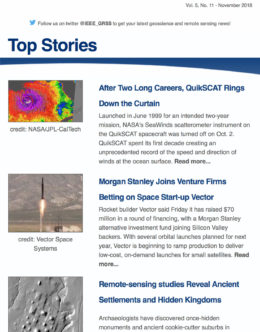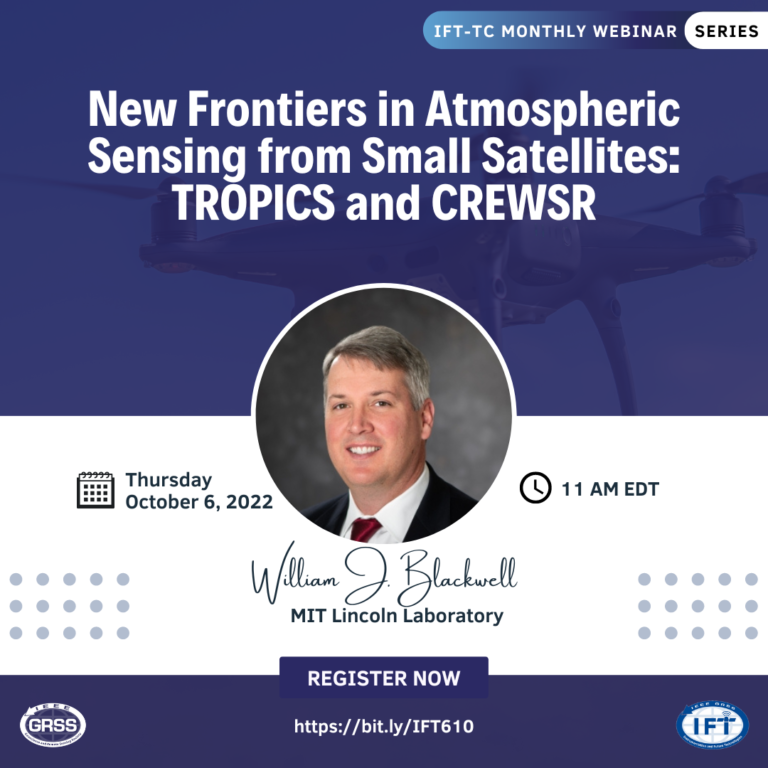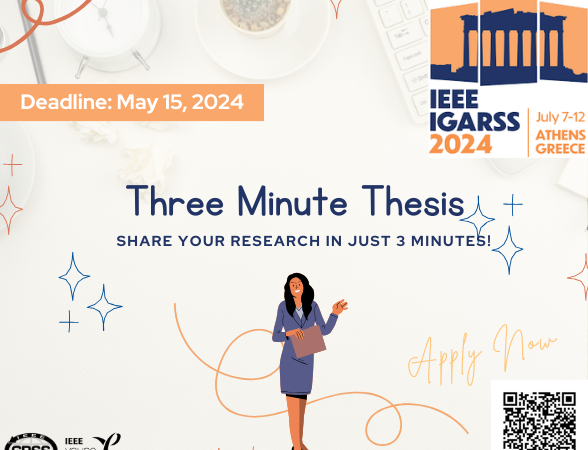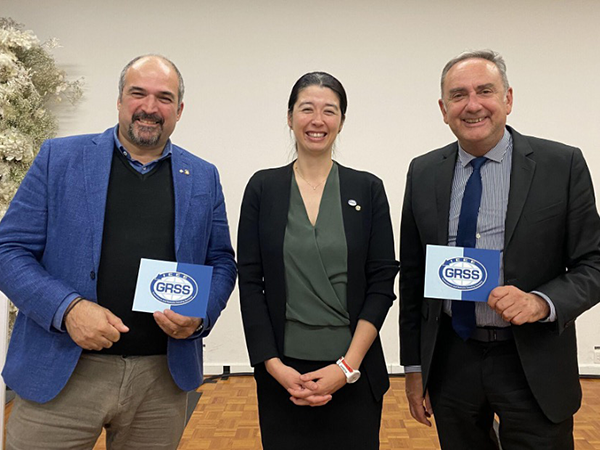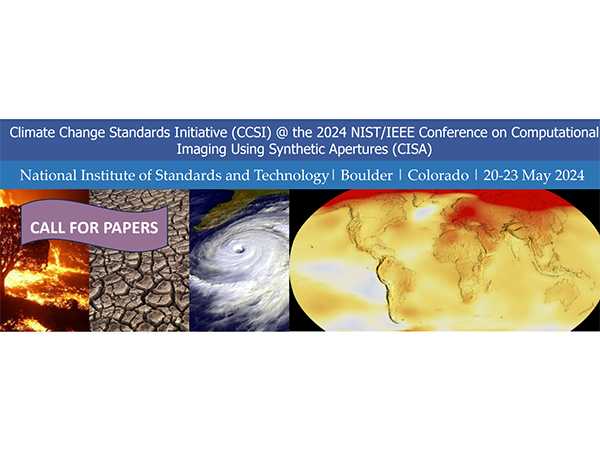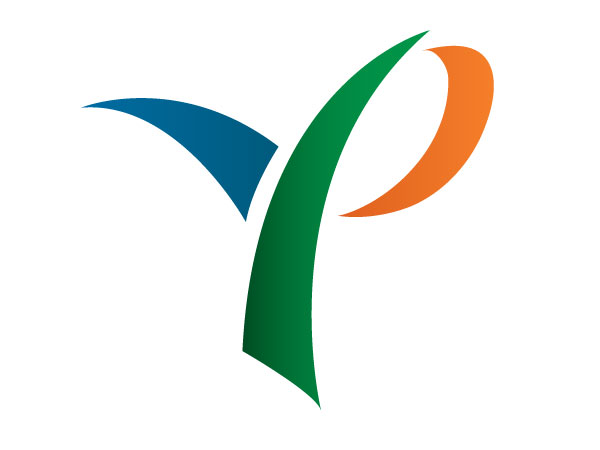New Frontiers in Atmospheric Sensing from Small Satellites: TROPICS and CREWSR
About the Webinar
In this presentation, two NASA-funded projects to improve atmospheric observations from small satellite platforms will be discussed. The Time-Resolved Observations of Precipitation structure and storm Intensity with a Constellation of Smallsats (TROPICS) mission was selected by NASA as part of the Earth Venture–Instrument (EVI-3) program. The overarching goal for TROPICS is to provide nearly all-weather observations of 3-D temperature and humidity, as well as cloud ice and precipitation horizontal structure, at high temporal resolution to conduct high-value science investigations of tropical cyclones (TCs), including: (1) relationships of rapidly evolving precipitation and upper cloud structures to upper-level warm-core intensity and associated storm intensity changes; (2) evolution (including diurnal variability) of precipitation structure and storm intensification in relationship to environmental humidity fields; and (3) the impact of rapid-update observations on numerical and statistical intensity forecasts of tropical cyclones. TROPICS will provide rapid-refresh microwave measurements in twelve channels spanning 90-205 GHz with a median refresh rate better than 60 minutes over the tropics that can be used to observe the thermodynamics of the troposphere and precipitation structure for storm systems at the mesoscale and synoptic scale over the entire storm lifecycle. The TROPICS Pathfinder (qualification unit) 3U CubeSat (5.4 kg) launched on June 30, 2021 and continues to collect data previewing a range of observables to be provided by the constellation mission, including temperature, water vapor, rain rate, and TC intensity indicators. The Configurable Reflectarray for Electronic Wideband Scanning Radiometry (CREWSR) project awarded as part of the Instrument Incubator Program (IIP) will provide a demonstration of all technologies needed for a large (~2×2 m), configurable aperture to be deployed from small satellite platforms. The system can operate near 24, 31, and 50-58 GHz with electronically scanned antenna beams, thereby eliminating any need for mechanical scanning and momentum compensation. The system is lightweight, very low power, and is built on low-cost silicon-on-insulator parts and proven techniques for deploying rigid precision surfaces.
About the Speaker


Dr. William J. Blackwell is the Associate Leader of the Applied Space Systems Group at MIT Lincoln Laboratory, where he leads a number of projects involving atmospheric remote sensing, including the development and calibration of airborne and space-borne microwave sensors, the retrieval of geophysical products from remote radiance measurements, and the application of electromagnetic, signal processing, and estimation theory.
Dr. Blackwell has served as associate editor of the IEEE Transactions on Geoscience and Remote Sensing and the IEEE Geoscience and Remote Sensing Society (GRSS) Magazine, cochair of the IEEE GRSS Remote Sensing Instruments and Technologies for Small Satellites working group, the NASA Aqua science team, and the National Academy of Sciences Committee on Radio Frequencies. He is currently the principal investigator on the NASA TROPICS Earth Venture mission and the MicroMAS (Micro-sized Microwave Atmospheric Satellite) missions. He was previously the Integrated Program Office sensor scientist for the Advanced Technology Microwave Sounder on the Suomi National Polar Partnership launched by NOAA in 2011 and the Atmospheric Algorithm Development team leader for the National Polar-orbiting Operational Environmental Satellite System (NPOESS) Microwave Imager/Sounder.
Dr. Blackwell received the MIT Lincoln Laboratory Technical Excellence Award in 2019 for his “innovative contributions to the science and practice of environmental monitoring.” He was selected as a 2012 recipient of the IEEE Region 1 Managerial Excellence in an Engineering Organization Award “for outstanding leadership of the multidisciplinary technical team developing innovative future microwave remote sensing systems.” In 2009, he was presented with the NOAA David Johnson Award for his work in neural network geophysical parameter retrievals and microwave calibration and is coauthor of “Neural Networks in Atmospheric Remote Sensing” (Artech House, 2009) and “Microwave Radar and Radiometric Remote Sensing” (Artech House, 2015). Dr. Blackwell has also been an author of more than 180 publications related to atmospheric remote sensing. He is a Fellow of the IEEE and an Associate Fellow of the AIAA.
Dr. Blackwell received the BEE degree in electrical engineering from the Georgia Institute of Technology and the SM and ScD degrees in electrical engineering and computer science from MIT, where he was a National Science Foundation Graduate Research Fellow.









